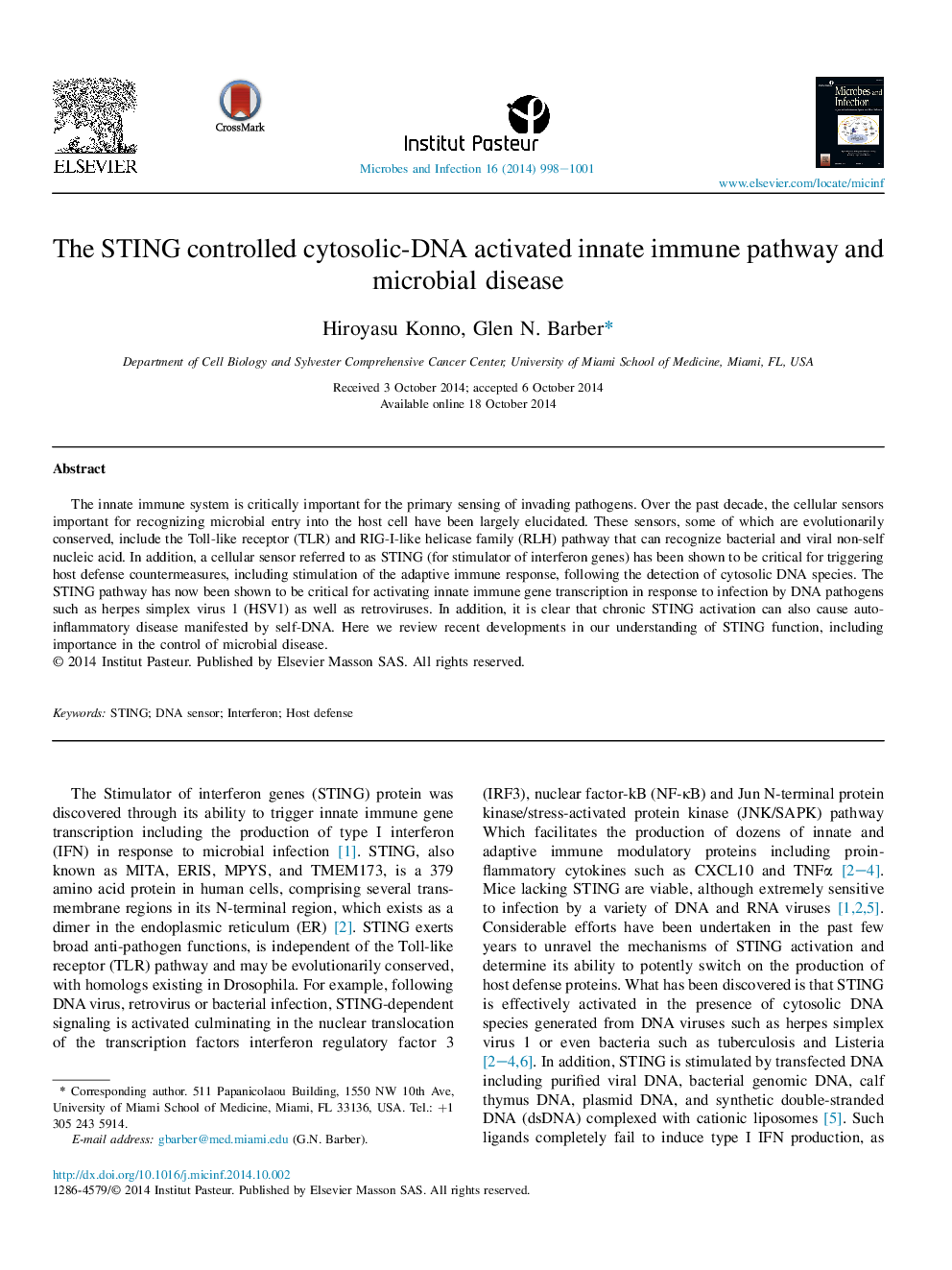| Article ID | Journal | Published Year | Pages | File Type |
|---|---|---|---|---|
| 6135717 | Microbes and Infection | 2014 | 4 Pages |
Abstract
The innate immune system is critically important for the primary sensing of invading pathogens. Over the past decade, the cellular sensors important for recognizing microbial entry into the host cell have been largely elucidated. These sensors, some of which are evolutionarily conserved, include the Toll-like receptor (TLR) and RIG-I-like helicase family (RLH) pathway that can recognize bacterial and viral non-self nucleic acid. In addition, a cellular sensor referred to as STING (for stimulator of interferon genes) has been shown to be critical for triggering host defense countermeasures, including stimulation of the adaptive immune response, following the detection of cytosolic DNA species. The STING pathway has now been shown to be critical for activating innate immune gene transcription in response to infection by DNA pathogens such as herpes simplex virus 1 (HSV1) as well as retroviruses. In addition, it is clear that chronic STING activation can also cause autoinflammatory disease manifested by self-DNA. Here we review recent developments in our understanding of STING function, including importance in the control of microbial disease.
Related Topics
Life Sciences
Immunology and Microbiology
Immunology
Authors
Hiroyasu Konno, Glen N. Barber,
